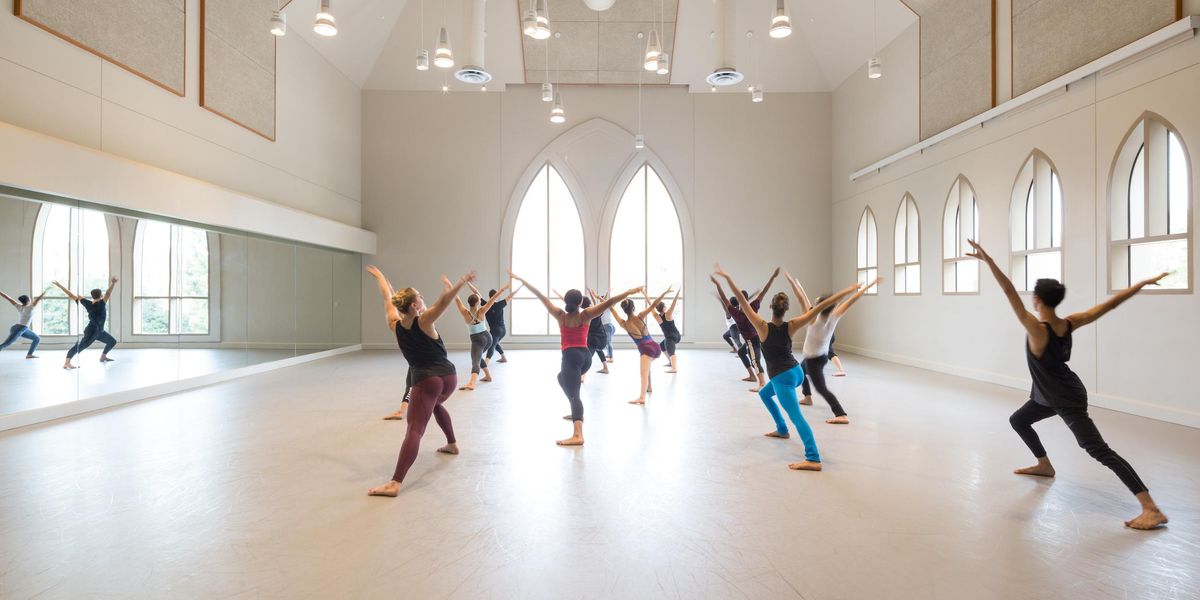Suzanne Farrell: Balanchine's Muse—And More
Farrell rehearsing Cook and Magnicaballi at Center for Ballet & the Arts, NYU, photo courtesy Kennedy Center
On Sunday afternoon Suzanne Farrell, the great Balanchine muse, graced the stage of the Skirball Center for the Performing Arts in New York City, courtesy of the Center for Ballet and the Arts at NYU. She showed a rehearsal of the master’s Gounod Symphony (1958) and gave a talk moderated by Jennifer Homans, founder/director of the Center.
Farrell’s devotion, spontaneity and playfulness shimmered with vitality. To everyone’s delight, her observations about teaching and setting ballets spilled into memories of her own dancing life. She gave the impression of being completely free in her relation to dance, and of totally trusting her instincts when it comes to Balanchine. Maybe she was more than a muse. I remember in one documentary, she described the way she worked with Balanchine in the studio as experimental. Maybe she was a collaborator as well as a muse.
Just as Balanchine would invoke Tchaikovsky’s ghost when he wanted to change the order of the music, she invokes Mr. B’s when she feels she needs to change the steps. When asked how she knows if it’s okay to change something, she said, “If he didn’t want me to change it, he would make it so I couldn’t look at myself in the mirror the next morning.”
Sunday at Skirball, the two excellent lead dancers from her DC–based company, the Suzanne Farrell Ballet, were Natalia Magnicaballi and Michael Cook.
Courtesy Kennedy Center
Here are some of her bon mots, some of them addressed to her dancers, others addressed to the audience.
To the dancers:
- You are not dancing for him but because of him.
- I’m not sure I would smile [in this part] but you have to look alive and pleasant. So let us see that.
- When you get onstage, all that [rehearsing] disappears. I never knew exactly what I was going to do next.
- With different conductors, it’s a new life every time you get out there.
- We can never harness time. We have to live in the music we have. You have your pulse. Moving very fast and very slow opened up a wide range of music.
- We’re all vulnerable in dance. That’s what makes it alive.
- Are you comfortable there? Tracey, you don’t look comfortable.
Farrell rehearsing Magnicaballi and Cook in Balanchine’s Monumentum, photo by Rosalie O’Connor for Pointe magazine
To the audience:
- The graveyard of ballets is well populated.
- Often steps get changed and it’s often the ones that are unique to that ballet.
- We have fun in the studio. Mistakes are fine. You just don’t want to make the same mistake.
- We are our own technology. All we have is who we are. We have to amplify. I say to my dancers, “Turn up the volume,” or “Let me see the technicolor in your eyes.”
- Everything we do defies gravity; we can’t perspire and we can’t make it look hard. It’s great to be a dancer!
- Dance is as big as the music allows.
- In many of Balanchine’s pas de deux, the man holds the woman’s wrist. It makes a better line and he can feel her pulse.
- In pas de deux, they have to know what each other is doing without looking at each other. Others come in and interrupt the dream.
- Mr. B’s ballets are memorable, not memories. You don’t’ want it to be a museum, but forever memorable.
- I don’t use the word change. I adapt. Mr. B would change the steps because they started to erode.
- You have to expand the number of dancers [to match the music]. All the senses should be satisfied.
- I would be remiss as a teacher if I held back.
- I still have dreams where I hear the music for my entrance and I can’t find the stage. I find a door and open it but it would be a black wall.
- I want to make you come into our world. You should be sitting on the edge of your seat like this, not back like this. You should want to participate. We give you everything.




